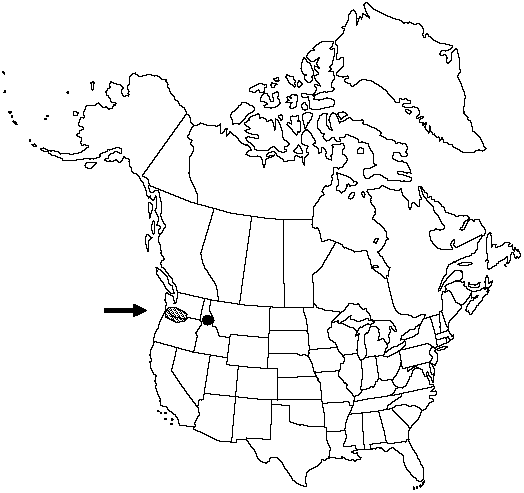Selaginella douglasii
Bull. Acad. Roy. Sci. Bruxelles 10: 138. 1843.
Plants on rock or terrestrial, forming loose mats. Stems long-creeping, branched, branches 2–3-forked, flat, not articulate, glabrous. Rhizophores borne on underside of stems throughout stem length or restricted to proximal ± 2/3 of main-stem or axillary throughout stem, 0.2–0.4 mm diam. Leaves delicate and papery. Lateral leaves spreading or slightly ascending, distant, shiny green becoming shiny brown, with orange or red spot or entirely reddish, ovate to ovate-oblong or oblong, 1.5–3.2 X (1–) 1.5–2.2 mm; base auriculate, basiscopic auricle conspicuous, acroscopic auricle inconspicuous or base ± rounded; margins green, ciliate toward auricles, otherwise entire; apex rounded to obtuse or truncate. Median leaves ovate-oblong, (1.8–) 2–2.2 × 1–1.3 mm; base auriculate, outer auricle larger than inner one; margins green, ciliate at auricles, otherwise entire; apex abruptly cuspidate to bristled. Strobili paired, 0.6–1.1 cm; sporophylls monomorphic, ovatelanceolate, keeled, keel not dentate, base glabrous, margins green, entire or with a few scattered, short cilia, apex acute to acuminate.
Habitat: Rocky slopes, mossy rock, rock crevices, in partial shade, often along river banks
Elevation: 100–800 m
Distribution

Idaho, Oreg., Wash.
Discussion
Selaginella douglasii, with no close relatives in the flora, is easy to identify by its shiny green leaves when young, turning shiny light brown when old, with an orange to red spot at the base, or totally reddish. Its closest relative is the Mexican S. delicatissima Linden ex A. Braun.
Selected References
None.